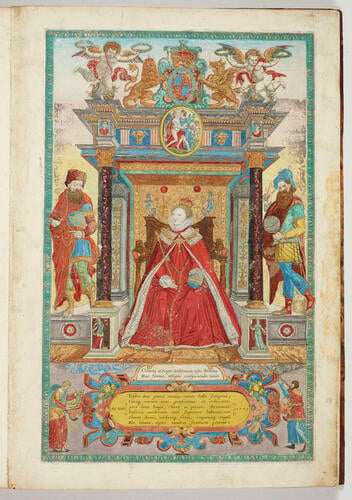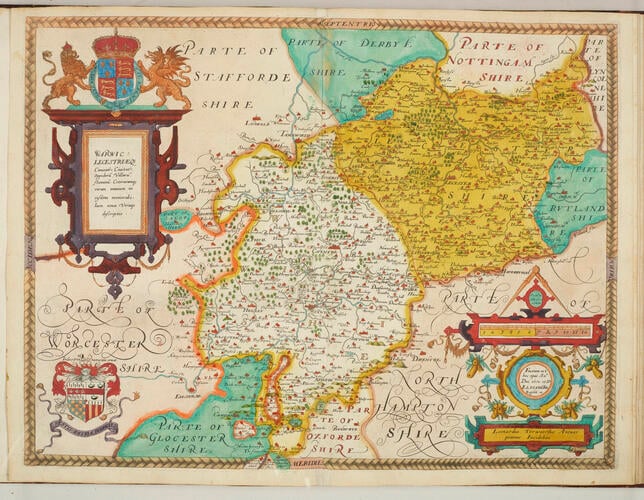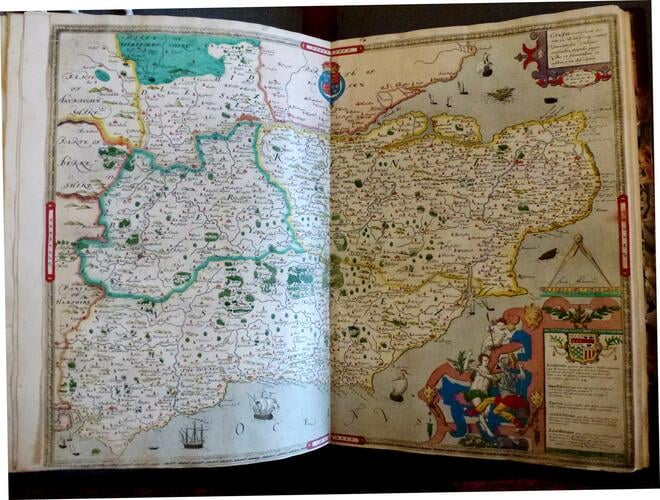-
1 of 253523 objects
After Christopher Saxton (c. 1543-1610/11)
Atlas of England and Wales. 1579
42.9 x 33.1 x 2.8 cm (book measurement (conservation)) | RCIN 1046848





-
Published in 1579 as the culmination of Christopher Saxton's extensive survey of the country, this hand-coloured book is the first comprehensive atlas of England and Wales. In his endeavour to produce the book, Saxton gained the patronage of Thomas Seckford, a friend of William Cecil and an advisor to Elizabeth I. The Queen ensured Saxton would have the aid of local experts whilst travelling to make his atlas. In recognition of this aid, the frontispiece bears an elaborate portrait of Elizabeth enthroned under a canopy with extensive gold decoration.
Aside from being the first complete atlas of England and Wales, Saxton's book was also an attempt to bring English engraving and cartography to prominence. Many of the engravers enlisted by Saxton were of Flemish or Dutch origin, but there were also numerous maps engraved by English artists, most notably Augustine Ryther (d. 1594), the first English map engraver to achieve recognition outside his home country.
Saxton's work was of immediate significance, and following the expiration of the patent granted by Elizabeth I in 1577, his work was used as a template for further atlases of England and Wales. This is particularly evident in John Speed's (c.1551-1629) Theatre of Great Britaine. Published in 1610, Speed used Saxton's maps as templates for his own work. This often consisted of re-engraving place names and adding further information to the maps originally designed by Saxton.Provenance
Likely acquired for the Royal Library before 1860.
-
Creator(s)
(engraver) -
Measurements
42.9 x 33.1 x 2.8 cm (book measurement (conservation))